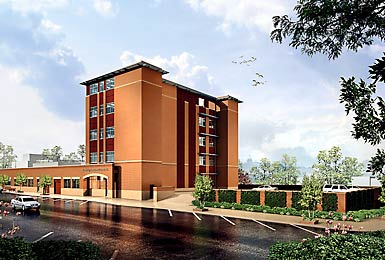Government Funding Sweetens Site Redevelopment
With grants and incentives available from the federal to the local levels, brownfields are attracting businesses seeking well-positioned sites.
2011 Directory

Brownfields are existing properties whose redevelopment is compromised by hazardous substances, contaminants, or other toxic materials. Identifying the type and extent of contamination can be tricky and expensive, making most contaminated properties unattractive for redevelopment and expansion. Potential buyers especially worry about the possibility of civil penalties and costly cleanup efforts under the Comprehensive Environmental Response, Compensation, and Liability Act of 1980 (CERCLA).
Nonetheless, remediating and reinvesting in these properties protects the environment, reduces community blight, and takes development pressure off green space and working lands.
"Brownfield programs take properties that once had a viable use and restore their productivity, create jobs, and increase the local tax base," says Tony Hozeny, communications director for the Wisconsin Department of Commerce. "Brownfields also tend to have established infrastructure, including roads, sewer, and power, as well as proximity to restaurants and other businesses."
Businesses should not underestimate the social value of developing brownfields, especially when other site selection factors are about equal for other considered properties.
"Brownfield redevelopment allows for economic recovery and re-energizes communities with new jobs, places to live and work, and entertainment centers," says Joseph Reidy, attorney and partner at Schottenstein Zox & Dunn, a Columbus, Ohio, law firm that specializes in brownfield redevelopment. "It's a great way to show commitment to a community."
For most companies, deciding on greenfield versus brownfield sites ultimately comes down to risk tolerance.
"From a corporate perspective, site selection is all about risk avoidance," says Buzz Canup, a site selection consultant and president of Canup & Associates. "Companies always want to minimize risk, whether it is related to market logistics, labor cost, or location. Brownfield sites are viewed as higher risk because they are less predictable. Some brownfields owned by investors are only cleaned up to a certain point. Others are still in some phase of identification and discovery. Any brownfield site that a company considers should be fully vetted. In my experience, there is typically some overriding factor that compels a client to choose a brownfield site."
Existing infrastructure often sways the decision. "For example, large, Tier 4 data centers don't require a large work force, so local labor not a huge issue," Canup says. "However, these centers do consume large amounts of electricity. A brownfield site that once hosted an operation that required a lot of electricity would be high interest to a new data center if there was still infrastructure in place that met their specific energy needs."
Because they are considered higher risk properties, brownfields can typically be purchased at below-market rates, sometimes marked down more than 50 percent. "Some recent projects have involved sites that were either donated by the prior owner or sold for $1," Reidy says.
Now millions of extra dollars are available from Housing and Urban Development (HUD) and the Environmental Protection Agency (EPA) for brownfield redevelopment through the American Recovery and Reinvestment Act (ARRA).
Project Announcements
Ninth Avenue Foods Plans Longview, Texas, Production Operations
12/06/2025
LayerZero Power Systems Expands Streetsboro, Ohio, Manufacturing Operations
12/06/2025
BioStem Technologies Plans Boca Raton, Florida, Headquarters Operations
12/06/2025
Saronic Technologies Expands St. Mary Parish, Louisiana, Operations
12/05/2025
JGA Space and Defense Expands Huntersville, North Carolina, Operations
12/05/2025
SODECIA-AAPICO Plans Orangeburg, South Carolina, Manufacturing Operations
12/05/2025
Most Read
-
Rethinking Local Governments Through Consolidation and Choice
Q3 2025
-
First Person: Filter King’s Expansion Playbook
Q3 2025
-
Rethinking Auto Site Strategy in the Age of Tariffs and Powertrain Shifts
Q3 2025
-
Lead with Facts, Land the Deal
Q3 2025
-
How Canada Stays Competitive
Q3 2025
-
America’s Aerospace Reboot
Q3 2025
-
The Permit Puzzle and the Path to Groundbreaking
Q3 2025



